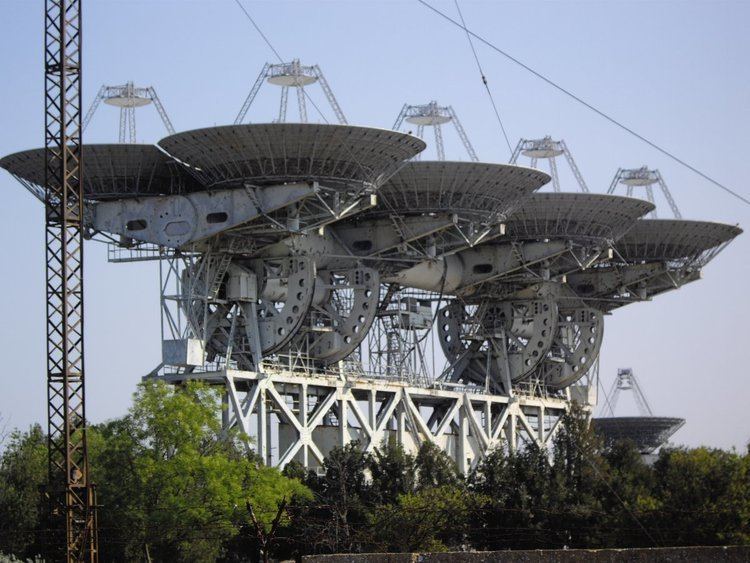 | ||
The Soviet Deep Space Network is a network of large antennas and communication facilities that supports interplanetary spacecraft missions, and radio and radar astronomy observations for the exploration of the solar system and the universe. It was built to support the space missions of the Soviet Union. Similar networks are run by the USA, China, Europe, Japan, and India.
Contents
History
The first Soviet space network had 13 stations and was designed to track Earth orbiting satellites. Interplanetary missions require larger antennas, more powerful transmitters, and more sensitive receivers, and this effort was started in 1959 to support the planned 1960 launch of the Venera series of missions to Venus and the Mars program of spacecraft to Mars. The selected design consisted of eight 16-meter dishes placed on two hulls of diesel submarines, welded together and laid down on the railway bridge trusses. These trusses were mounted on bearings from battleship gun turrets. Three such antennas were built: the two North stations for receiving, and the south station a few kilometers away for transmitting.
In 1978, these antennas were augmented by the 70-meter antennas at Yevpatoria and Ussuriisk, with a third that was never completed at Suffa, Uzbekistan.
Facilities
There are three main antennas in this Deep Space Network:
Missions
Some of the Soviet space program missions that have communicated by the Soviet DSN include:
